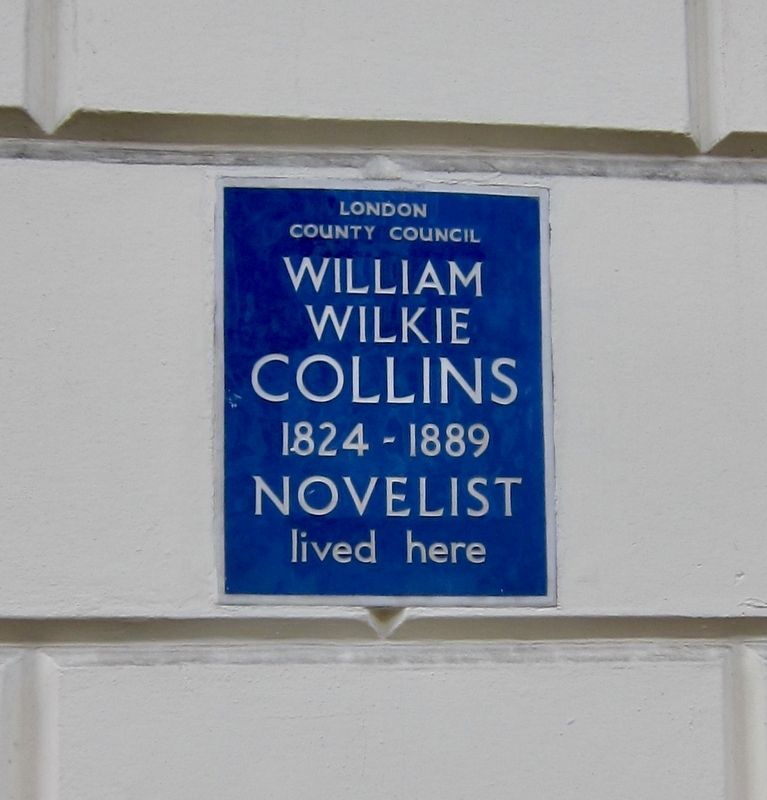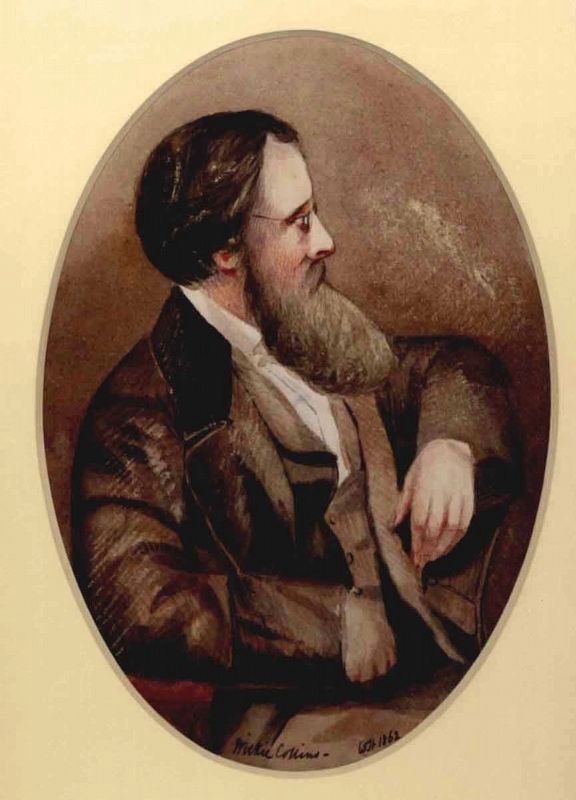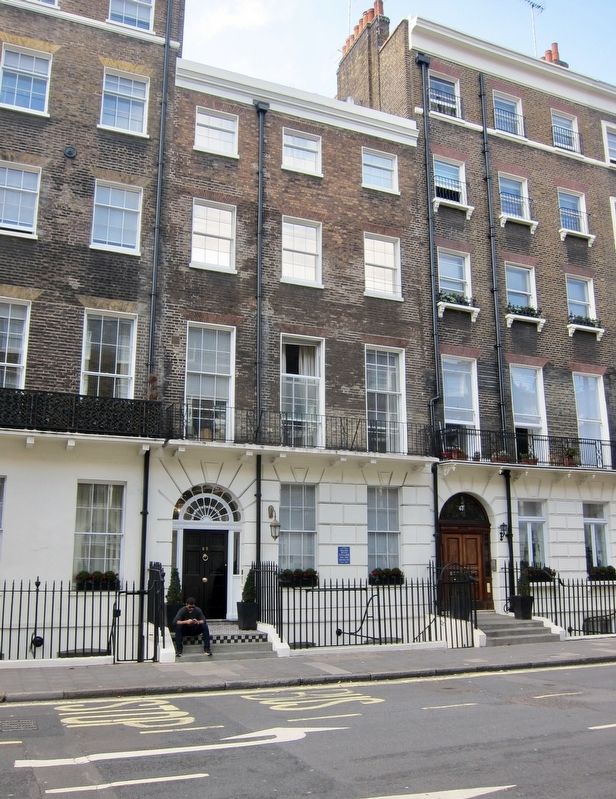City of Westminster in Greater London, England, United Kingdom — Northwestern Europe (the British Isles)
William Wilkie Collins
Wilkie
Collins
1824-1889
Novelist
lived here
Erected 1951 by London County Council.
Topics. This historical marker is listed in these topic lists: Arts, Letters, Music • Entertainment.
Location. 51° 31.118′ N, 0° 9.502′ W. Marker is in City of Westminster, England, in Greater London. Marker is on Gloucester Place just north of Blandford Street, on the left when traveling north. Touch for map. Marker is at or near this postal address: 65 Gloucester Place, City of Westminster, England W1U 8JL, United Kingdom. Touch for directions.
Other nearby markers. At least 8 other markers are within walking distance of this marker. Benedict Arnold (a few steps from this marker); John Robert Godley (within shouting distance of this marker); Anthony Trollope (about 120 meters away, measured in a direct line); John Lennon (about 120 meters away); Tony Ray-Jones (about 180 meters away); Jacqueline du Pré (about 210 meters away); Sir Gerald Kelly (about 240 meters away); Sir Alfred Ayer (approx. 0.2 kilometers away). Touch for a list and map of all markers in City of Westminster.
Also see . . . Wilkie Collins - A Short Biography. Wilkie Collins Information Pages website entry:
"William Wilkie Collins, or Wilkie as he was known to his friends and readers, was born in London's Marylebone where he lived more or less continuously for 65 years. Today he is best known for The Moonstone (1868), often regarded as the first true detective novel, and The Woman in White (1860), the archetypal sensation novel. During his lifetime, however, he wrote over thirty major books, well over a hundred articles, short stories and essays, and a dozen or more plays....T. S. Eliot described The Moonstone as the first and greatest of English detective novels'. It is certainly a landmark in the history of crime fiction and has a strong claim to having established detective fiction as a genre. It influenced Collins's successors from Trollope and Conan Doyle onwards and has set the standard by which other detective novels are judged. During its serialisation in All the Year Round there were crowds of anxious readers outside the publishers' offices in Wellington Street waiting for the next instalment. Like The Woman in White, it has never been out of print." (Submitted on October 22, 2017.)
Credits. This page was last revised on October 14, 2023. It was originally submitted on October 22, 2017, by Andrew Ruppenstein of Lamorinda, California. This page has been viewed 213 times since then and 12 times this year. Photos: 1. submitted on October 22, 2017, by Andrew Ruppenstein of Lamorinda, California. 2. submitted on October 14, 2023, by Larry Gertner of New York, New York. 3. submitted on October 22, 2017, by Andrew Ruppenstein of Lamorinda, California.


